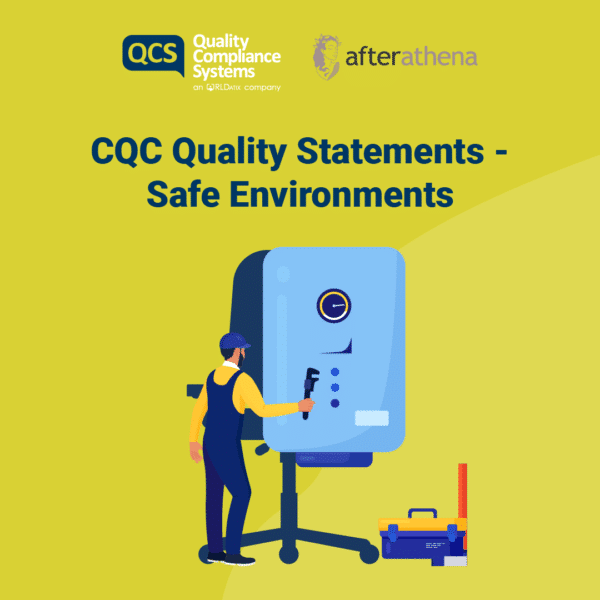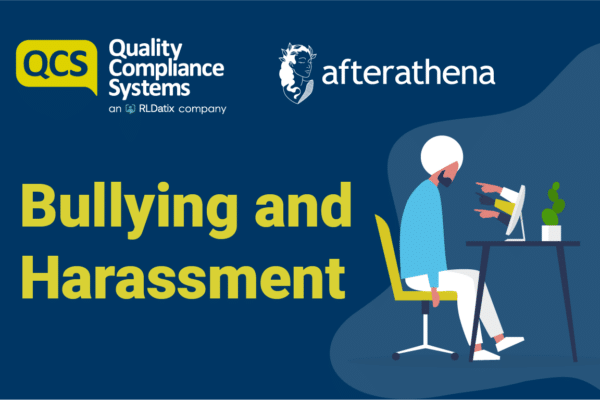Download our monthly H&S review for October on ‘CQC Quality Statements – Safe Environments’ from our partner, AfterAthena, here
DOWNLOAD NOW
Alternatively, read it here:
Gas Safety
‘Safe environments’ is one of the quality statements under the key question of safe from the Care Quality Commission. As a reminder, quality statements are the commitments that health and social care providers should live up to. The quality statements are part of the CQC’s new Single Assessment Framework and will be introduced as part of a phased approach from November 2023 until the end of March 2024.
As a reminder, this statement says that health and social care providers will detect and control potential risks in the care environment. They will make sure that the equipment, facilities and technology support the delivery of safe care. This is further set out in the Health and Social Care Act 2008 (Regulated Activities) Regulations 2014: Regulation 15 which covers premises and equipment.
Safe environment would include, amongst others, gas safety.
It is an offence for any person to undertake work on a gas appliance or fitting unless they are trained and competent to do so and it is an offence for their employer to allow such work to take place. Those who undertake work on gas equipment and fittings (other than industrial process plant) also have to be Gas Safe Registered.
Gas Safe Register works to protect the public from unsafe gas work through:
- A dedicated national investigations team tracking down individuals working illegally
- Regular inspections of Gas Safe registered engineers
- Educating consumers and raising awareness of gas safety, investigating reports of unsafe gas work
Carbon monoxide (CO) is a colourless, odourless, tasteless, toxic gas produced by incomplete burning of carbon-based fuels, including gas, oil, wood and coal. Carbon-based fuels are safe to use. It is only when the fuel does not burn properly that excess CO is produced, which is poisonous. When CO enters the body, it prevents the blood from transporting oxygen to cells, tissues and organs.
Maintenance: Pipework, appliances and flues must be maintained in a safe condition. Gas appliances should be serviced in accordance with the manufacturer’s instructions. If these are not available, it is recommended that they are serviced annually unless advised otherwise by a Gas Safe registered engineer.
Gas safety checks: A 12-monthly gas safety check must be carried out on every gas appliance/flue. A gas safety check will make sure gas fittings and appliances are safe to use.
Record: Ensure copies of gas safety check documentation are kept and filed.
What are the risks?
Gas leaks, which may be caused by faulty gas appliances and pipework. Unburnt natural gas and LPG are not poisonous in the same way that carbon monoxide is, but both can lead to fires and explosions. To aid detection of a leak, an odorant is added to gas which makes it easy to smell.
Fires and explosions, as gas is highly flammable. If gas leaks from a faulty appliance or pipework it can spread quickly. There is then a risk of it accidentally igniting and causing a fire or explosion. Typically, such incidents are very grave in their outcomes and gas safety issues should have a high priority.
Carbon monoxide (CO) can leak from badly fitted or poorly maintained gas appliances. It is a highly poisonous gas and extremely dangerous as you cannot see it, taste it or smell it but it can kill quickly and with no warning. It can also cause serious, long-term health problems such as heart conditions and damage to the unborn child.
Controls that can be considered
- To avoid a gas leak, ensure all gas appliances, fixtures and fittings are fitted, serviced and maintained by a Gas Safe registered engineer. Any damage or signs of corrosion, such as rusting or green discolouration on copper pipework, must be checked
- The Gas Safe Register recommends the use of audible carbon monoxide alarms where gas appliances are used. Such alarms should be marked to BS EN 50291-1:2018 and also have the British Standards’ Kitemark. CO alarms can have a battery life of up to five years and this needs to be verified along with the best sites to locate them in the premises before any installation is undertaken
- Ventilation is key to lowering risk, especially when concerning gas safety in catering. A well-maintained ventilation system, good user awareness of risks and proper, documented procedures for using additional ventilation are essential
- In commercial kitchens it is essential that appliances with flue ventilation are interlocked so that the gas supply is shut off if the ventilation is not working correctly. Emergency gas shut off valves should also be provided
Further Reading






